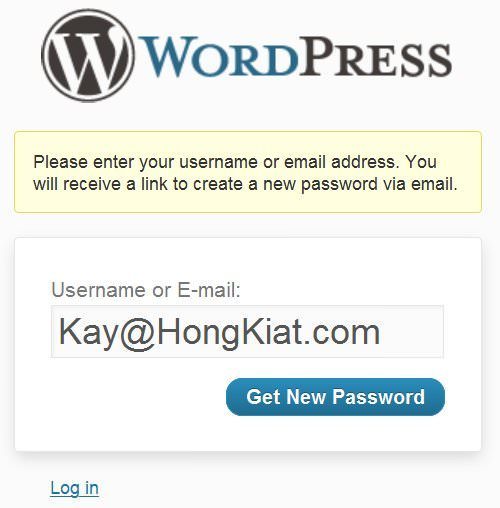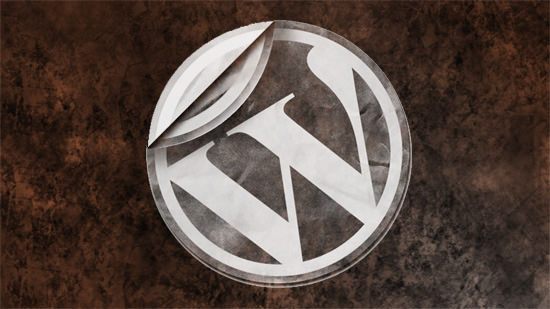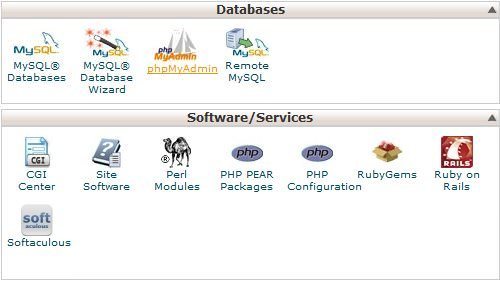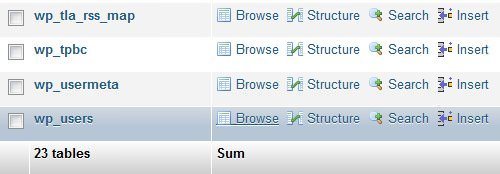If you are a WordPress user who likes to get your hands dirty with the codes, or one who just loves installing plug-ins and changing themes, you’ll understand that encountering an error is an inevitable occurrence. WordPress users (like us) know how frustrating it is to stumble into an unexpected error and not be able to find a solution for it. Most WordPress problems are solvable; If you hit an error, don’t fret because chances are, some other WordPress user had the same problem and had already gotten it solved.
In today’s post, we take a look at some of the most common WordPress errors users have encountered, and share with you the solutions to fix those problems or make them go away. We hope this will comes in handy for you – happy WordPressing!
You might also like:
- Basic Shell Commands For Bloggers
- WordPress Tweaks to Improve Posts and Pages
- Hardening WordPress Security: 25 Essential Plugins + Tips
1. Lost Admin Password & Email Retrieval Is Not Functioning
The problem:
You lost your WordPress admin password, and have tried to enter your username or email address in the “Lost your password?” page but failed to receive any link to create a new password via email.

Here are 2 simple solutions to reset your WordPress admin password.
Solution 1: phpMyAdmin
- Login cPanel, click on phpMyAdmin under Databases.
- Select your WordPress database. For example: Username_wrdp1.
- Go to wp_users, click on Browse.
- Look for your Username and click Edit.
- Reset your password by inserting a new value into user_pass. Remember, it is case-sensitive.
- Once you completed this, click the dropdown menu under Function, and choose MD5 from the menu.
- At the bottom of the page, click the Go button.
Solution 2: Via FTP
- Login your FTP account.
- Go to “../wp-content/themes/(your active theme)/”, download thefunctions.php file.
- Open functions.php and add the code below right after the first <?php:
- wp_set_password(‘YourNewPassword’,1);
- Replace YourNewPassword with your desired new password. The “1” in the script is the user ID number in the wp_users table.
- Upload the edited functions.php file to your FTP.
- Remove the code and upload to your FTP after you’re able to login WordPress.
2. WordPress admin dashboard is not displaying properly
The problem:
The WordPress admin dashboard is displaying without CSS. All the links are not arranged properly.
Solution 1: Proxy & Firewall
Check if your Internet connection is behind a proxy connection or firewall. Some of these tools are blocking CSS files making CSS files to not load properly. Try to clear your proxy or firewall cookies and cache, and press Ctrl + F5 to refresh your page.
Solution 2: Upgrade WordPress Plugins
If you have any WordPress plugins installed for the admin menu such as ‘Admin Drop Down Menu’ plugin or ‘Lighter Menus’ plugin, upgrade it. If it doesn’t work, try to deactivate it.
3. Warning: Cannot modify header information – headers already sent by
The problem:
You receive an error message on your browser “Warning: Cannot modify header information – headers already sent by (output started at /path/blog/wp-config.php:34)” right after upgrading your WordPress or a new WordPress installation.
Solution: Remove spaces, new lines, or other garbage in wp-config.php
- Download wp-config.php via FTP.
- Open wp-config.php.
- Remove all spaces before <?php.
- Make sure the first characters are <?php, placed at the first line with no space in between.
- Remove all spaces after ?>
- Make sure the last characters are ?>, placed at the last line with no space in between.
This error could happen on other files too. Read the error message carefully as it states the specific file name where the error occurred.
4. WordPress blog and admin Is showing blank page
The problem:
This error normally happens right after a new WordPress Themes installation or WordPress upgrade. The entire blog is showing a blank page; so is the WordPress admin login page. There’s no way to access the dashboard.
Solution 1: Rename current installed theme folder via FTP Renaming the currently installed theme folder via FTP can force WordPress to choose the default theme to be put into service and you’re able to access WordPress wp-admin after that.
- Navigate to the wp-contents/themes directory via FTP.
- Rename current installed theme folder. For example: “twentytwenty” to “twentytwenty-temp”.
- Login to your WordPress wp-admin.
- Check if your theme is compatible with your version of WordPress.
- Check if your theme contains coding which can’t be executed.
Solution 2: Reset plugin folder via FTP
- Navigate to the wp-contents directory via FTP.
- Rename plugins folder to “plugins-temp”.
- Create a new folder called “plugins” at wp-contents.
- Try to login to your WordPress wp-admin.
- Move your plugin from “plugins-temp” to “plugin” and activate them one by one.
- Check if any plugin is not compatible with your version of WordPress.
5. Fatal error: Allowed memory size of 33554432 bytes exhausted
The problem:
Receive “Fatal error: Allowed memory size of 33554432 bytes exhausted” when try to upload an image with medium file size. To solve this error, try to increase the memory allocated to PHP. You can set the limit to 32MB, 64MB, 128MB or 256MB. It depends on your host.
Solution 1: Edit PHP.ini
If you’re still allowed to edit your PHP.inifile, update your memory_limit inPHP.ini by modifying the below line.
memory_limit = 64M ; Maximum amount of memory a script may consume (64MB)
If the line is showing 64M in default, try 128M.
Solution 2: Edit .htaccess file
Add the script below to your .htaccess file.
php_value memory_limit 64M
Solution 3: Edit wp-config.php file
Add the script below to your wp-config.php file
Increasing memory allocated to PHPdefine('WP_MEMORY_LIMIT', '64M');
Solution 4: Create a PHP.ini file to wp-admin folder
- Open Notepad.
- Insert the following code into Notepad.
memory_limit = 64M;
- Save as “PHP.ini”.
- Upload this file to “wp-admin” directory.
6. You are not authorized to view this page (403 error)
The problem:
You receive an error message “You are not authorized to view this page. (403 error)” after inserting the username and password in the WordPress admin login page.
Solution: Enable Index.php
If your blog is hosted on a Windows server, this could be an error with Directory Indexes.
- Login to the Control Panel.
- Click on Web Options.
- Go to Directory Indexes section.
- Add index.php to the Directory Indexes
7. Fatal error undefined function is_network_admin()
The problem:
You receive “Fatal error undefined function is_network_admin()” when you login to WordPress admin after updating WordPress.
Solution: Manual Update
This error is caused by a fail WordPress version upgrade. Try a manual update.
- Download the latest WordPress zip file and unzip it.
- Back up your WordPress.
- Rename wp-includes and wp-admin directories to wp-includes.bak andwp-admin.bak.
- Upload the wp-includesand wp-admin directories from unzipped folder to your web host via FTP.
- Upload files from new wp-content to your existing wp-content folder. Replace and overwrite existing files.
- Upload the new version of the rest of files from the root directory to your existing WordPress root directory.
- Remove .maintenance at your WordPress directory via FTP.
- Login to WordPress admin and you will be given a link to URL like “http://domain.com/wordpress/wp-admin/upgrade.php”. Follow the link and instructions.
- Clear your cache to see the changes if you have caching enabled.
For more details about WordPress manual update, read https://wordpress.org/support/article/updating-wordpress/.
8. WordPress Admin Login 404 Issue
The problem: You’re not able to login to WordPress admin. You receive a 404 error page instead.
Solution 1: Update the URL in database
If you’re able to access phpMyAdmin, try to update the URL in the database.
- Login cPanel, click on phpMyAdmin under Databases.
- Select your WordPress database. For example: Username_wrdp1.
- Go to wp_options, click on Browse.
- Search for siteurl under the field option_name.
- Click on Edit Field.
- Change the URL in the input box of option_value.
- At the bottom of page, click the Go button.
Solution 2: Update Folder Attributes
- Go to “/wp-admin” directory via FTP.
- Right click on wp-admin directory and click on File Attributes.
- Update the value to 755 and check Recurse into subdirectories if there’s an option.
- Click OK.
- Repeat step 1 to step 4 for /wp-content and wp-includes.
- Open your web browser and try to login to WordPress admin. Press Ctrl +F5 to clear cache.
9. “Briefly unavailable for scheduled maintenance” message remainins after an automatic upgrade
The problem:
Your WordPress site is showing “Briefly unavailable for scheduled maintenance” after an automatic upgrade has completed.
Solution: Remove .maintenance file
A file named .maintenance is placed by WordPress during an automatic upgrade to notify visitors that the site in under a short maintenance. If an upgrade fails or is corrupted, the file will remain in the WordPress folder and won’t get deleted.
To remove .maintenance file,
- Access your blog root directory via FTP.
- Locate the file .maintenance.
- Remove the .maintenance file from the blog root directory.
Once you solve this problem, you may want to run the WordPress automatic upgrade again.
10. Can’t delete a plugin
The problem:
You’re not able to delete a plugin in WordPress admin. It still appears even after you have deleted the directory via FTP.
Solution: Delete plugin via Secure Shell (SSH)
Your plugin might had uploaded some hidden/nested files inside the plugin directory which didn’t appear in FTP.
If you have SSH access to your blog,
- Login your site via SSH.
- Use SSH commands to nagivate “../wp-content/plugins/”.
- Use ls -al to see the full list of folders.
- Delete the particular plugin folder with rm (Folder Name).
Have comments you want to share abou the errors and solutions above? Share them below.


